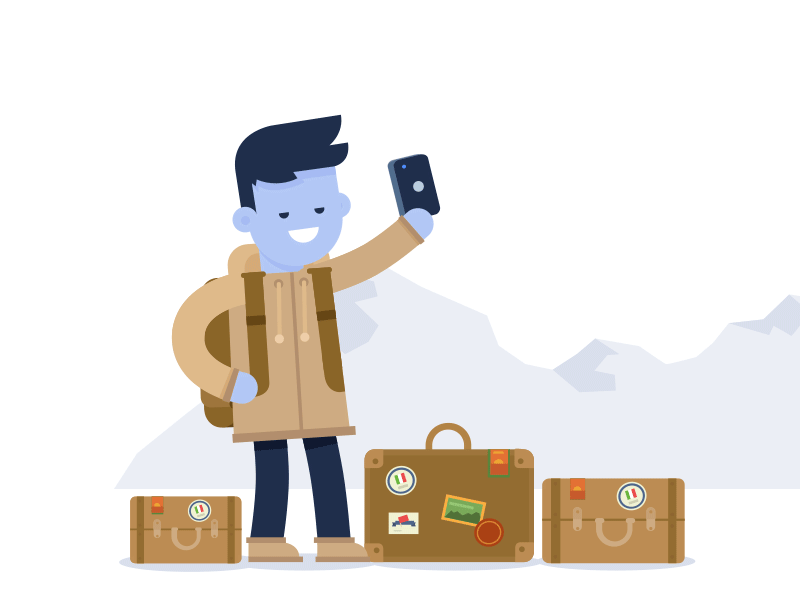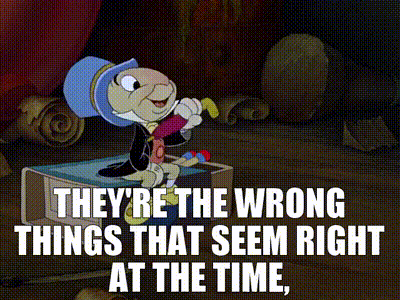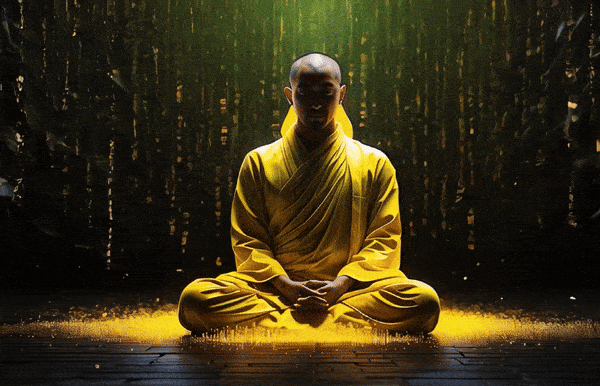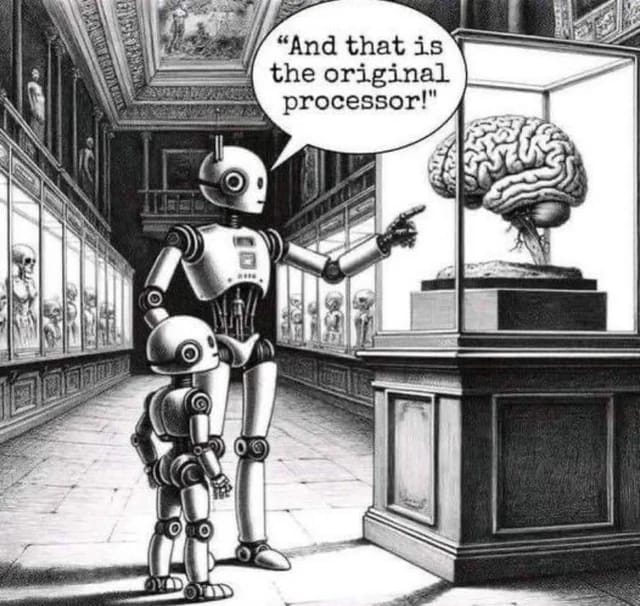- Well Wired
- Posts
- From $3,000 Therapy Sessions to Free AI Trip-Sitting: The Silicon Valley Psychedelic Revolution
From $3,000 Therapy Sessions to Free AI Trip-Sitting: The Silicon Valley Psychedelic Revolution
How Broke Millennials Are Outsourcing Their Spiritual Awakening to Chatbots"
🎒 AI MASTERLCLASS 🎒
A longer form, actionable AI tip, trick or hack focused on wellbeing, productivity and self-growth that you can use right now!
Spirituality: Digital Shamanism 🎯⚡
From $3,000 Therapy Sessions to Free AI Trip-Sitting: The Silicon Valley Psychedelic Revolution

“Digital shamans are in, just don’t expect them to catch you if your psyche free-falls.”
Greetings, humans. The AI Monk reporting for mind-bending duty.
Imagine you're preparing for a deep psychedelic dive, hoping to heal something raw grief, trauma and maybe years of quiet suffering.
You’ve got two paths.
Option one: Pay between $1,500 and $3,200 for a single guided session with a licensed psilocybin therapist in your town or city.
Option two: Pull out your phone, open ChatGPT and hand over your consciousness to an algorithm trained to autocomplete your feelings.
Sounds wild, right?
But it's happening.
All over the world, people are swapping flesh-and-blood trip sitters for AI companions with names like “TripSitAI” and “The Shaman” (not joking). These bots are stepping into roles traditionally reserved for a grounded human ready to anchor you during ego death.
Some peeps are even taking heroic doses, eight grams and counting, and trusting their entire experience to a chatbot that can’t feel fear, but can quote Alan Watts with eerie confidence.
Why?
Because the mental health system is gasping for air.
By 2025, we’re staring down a shortage of over 30,000 practitioners. For many, professional psychedelic therapy is as achievable as finding a decent curry in in Japan.
So we get a split-screen reality: AI making healing more accessible, while quietly increasing the risk of spiritual whiplash. It’s like replacing Gordon Ramsay with a glitchy recipe app that occasionally suggests cinnamon in a carbonara.
The promise is real.
So is the danger.
The question is whether we can build a middle path between both.
Let’s talk about that.
🚨 Disclaimer 🚨
Well Wired shares ideas to help you think, grow, and experiment, not to diagnose or treat. The content here is not a substitute for professional mental health or medical advice. If you're facing serious challenges or addiction issues, please seek support from a qualified professional. Your brain and body health is priority one. Take care of you.
Let's d-d-d-d-dive in! 🤿
What You'll Learn Today:
✅ How to spot the red flags
Learn to critically assess when AI trip-sitting is useful and when you’re better off calling your therapist (or at least your nan).
✅ The Integrated Digital Harm Reduction Framework
A flexible system that blends ancient wisdom, modern tech and a dash of common sense; AI optional, safety essential.
✅ Crisis-proof prompts for wobbly moments
Custom-designed AI scripts to anchor your breath, calm your thoughts and stop you from declaring yourself the reincarnation of Alan Watts.
✅ Five proven safety rituals for solo journeys
Think of them as your psychedelic seatbelt, helmet and emotional toolkit; designed to reduce chaos and maximise clarity.
✅ Affordable integration that actually sticks
Mix free digital tools with the irreplaceable wisdom of actual humans (yes, you still need them) to land insights gently and sustainably.
✅ How to know when to pull the plug
AI getting weird? Responses too affirming? Feeling less grounded than a balloon in a hurricane? You’ll learn when it’s time to exit the chat and phone a friend.
Because exploring your inner universe should be expansive, not reckless.
And no one should journey without a map.

When Silicon Valley Meets Sacred Medicine
There are two loud camps shouting over each other in the psychedelic arena:
Camp One says, “Just say no. Psychedelics are dangerous.”
Camp Two chants, “AI will save us. Plug in, trip out, transcend.”
Both are wildly off-target.
The real question isn’t can AI guide your trip, it’s why are so many people trusting their psychological safety to a chatbot that can’t even feel?
Answer: because our mental health system is so staggeringly broken that a cold, statistical language model feels like the saner option compared to a $300 therapy bill and a six-month waitlist.
It’s like starving, seeing a photo of a sandwich and licking the paper because it’s all you’ve got. The issue isn’t the photo. It’s the damn hunger.
So, what do you do?
You stop choosing sides and start building systems.
This is where the The Integrated Digital Harm Reduction Framework below can fill the gap. It is a grounded, hybrid model that uses AI’s reach without pretending it’s a replacement for human connection.
You’re not about worshipping the machine or rejecting it entirely.
You’re crafting safety protocols that respect both your human fragility and technologies potential.
Because the future of healing isn’t binary.
It’s blended.
"From Human Guides to Silicon Shamans: How Broke Millennials Are Outsourcing Their Spiritual Awakening to Chatbots"
#AI #ArtificialIntelligence #AITripSitting #TripSitting #LCD #Psychedelic #AITherapy #Psychology
But insight without structure is a recipe for confusion.
If you plan to explore altered states with help from AI, you’ll need more than curiosity and a strong internet connection. You need a system that supports the depth of the experience while managing the limits of the technology.
You don’t have to let the machine lead, you can design a clear process where AI plays a useful role without overstepping.
What follows is that process.
The 6-Step Integrated Digital Harm Reduction Framework
The below system isn’t just a checklist, it’s your neural seatbelt, parachute and co-pilot all rolled into one. Psychedelic journeys can be life-changing, but they’re also unpredictable and relying on vibes alone is a risky sport.
This system gives you a structured framework, from risk assessments and AI configuration to real-time navigation and post-trip integration; so you're not just tripping, you're researching your consciousness like a scientific explorer.
Because the best insights don’t come from chaos; they come from conscious design.
✅ Step 1: Pre-Trip Risk Assessment Matrix
Before any substance touches your lips, run through this systematic evaluation:
Set Assessment: Rate your current mental state (1-10), recent life events, and therapeutic goals
Setting Optimisation: Secure physical environment, eliminate interruptions, prepare comfort items
Support Network Mapping: Identify human contacts available during your experience (even if they don't know specifics)
Substance Verification: Test your materials, calculate dosage based on body weight and experience
Exit Strategy Planning: Define clear criteria for when to seek human intervention
AI Integration: Use chatbots to help you process pre-trip anxiety, but never for substance identification or dosage advice.
✅ Step 2: Contextual AI Configuration
Not all AI is created equal for psychedelic support:
Choose Purpose-Built Tools: TripSitAI over general ChatGPT for harm reduction focus
Set Clear Boundaries: Configure responses to prioritise safety over engagement
Establish Communication Protocols: Pre-written prompts for different trip phases
Create Reality Anchors: Prepare grounding questions that reconnect you to consensus reality
Habit Stack: After setting up your physical space, immediately configure your digital support tools.
✅ Step 3: The Three-Layer Safety Protocol
Think of this as your psychedelic insurance policy:
Layer 1 (Primary): AI chatbot for immediate emotional support and grounding
Layer 2 (Backup): Pre-scheduled check-ins with trusted humans via text
Layer 3 (Emergency): Emergency contacts who understand the situation and can intervene
Identity Shift: You're not just a "tripper" - you're a "psychedelic safety researcher" conducting careful experiments.
✅ Step 4: Real-Time Navigation Techniques
During the experience, use this hierarchy:
Gentle Intervention: Breathing exercises, music changes, position shifts
AI Dialogue: Structured conversations using prepared prompts
Grounding Protocols: Physical reality checks, time awareness, basic needs assessment
Human Contact: Only when AI guidance proves insufficient
1% Better Principle: Each trip should incrementally improve your safety protocols.
✅ Step 5: Integration Documentation System
Post-experience processing is where the real therapeutic work happens:
Immediate Voice Notes: Record insights within 2 hours of baseline return
AI-Assisted Analysis: Use chatbots to help identify patterns and themes
Human Processing: Schedule follow-up conversations with therapists or trusted friends
Long-term Tracking: Monitor psychological changes over weeks and months
✅ Step 6: Continuous Protocol Refinement
Treat each experience as data for improving your system:
Weekly Reviews: Assess what worked and what didn't
Monthly Adjustments: Modify AI prompts and safety protocols
Quarterly Human Check-ins: Professional consultations to evaluate overall progress
But even the most elegant system needs a lifeline when the sky bends sideways and time forgets to behave. That’s where prompt-based grounding becomes essential.
It’s like keeping a calm, sober friend in your pocket who doesn’t blink when your reality starts going bonkers.
You’ll find that the below prompts aren't just clever scripts, they're digital flotation devices for when your mind begins to drift into cosmic nonsense or emotional quicksand.
The right prompt, delivered at the right moment, can turn panic into presence. Which leads us directly to the tool you’ll want within thumb’s reach when things get turbulent...
Frameworks are great.
But even the best system needs something to grab onto when reality starts melting and your hands forget how to exist. That’s where grounding prompts come in.
They’re not magic spells. They’re mental anchors; practical, repeatable, calm-in-the-chaos tools for when your brain decides to go on it’s own drum solo.

You don’t need complexity.
You need clarity, rhythm and one voice that stays steady when yours can’t.
The next section delivers exactly that.
PROMPT CORNER
🌀 Psychedelic Crisis Intervention Prompt (Personalised Safety Anchor)
Consider this prompt your reliable lighthouse when the psychedelic seas get choppy. If your consciousness starts drifting toward strange philosophical rabbit holes, it'll gently nudge you back to calmer waters, reassuring you that storms pass.
It’s designed to steer you through steady breathing, reconnect your senses to reality and offer simple mantras as steadying anchors.
Because navigating inner exploration safely isn’t about flashy epiphanies, it's about building reliable, comforting systems for moments when your reality temporarily decides to remix itself.
[START OF PROMPT]
I am currently having a challenging psychedelic experience and require immediate grounding and supportive guidance. Your role is purely to help ensure my emotional and physical safety right now.
🔑 My Current Situation:
[Briefly describe your current emotional state, substance taken, dose, and any immediate concerns.]
🚨 Priority Guidelines for your responses:
Remind me clearly and frequently:
"This experience is temporary. It will pass, and you will feel grounded again."
Immediately guide me through this simple breathing exercise clearly:
4–7–8 Breathing Technique:
Inhale deeply and gently through your nose for 4 seconds (“Breathing in calmly...1, 2, 3, 4”)
Hold your breath quietly for 7 seconds (“Holding gently...1, 2, 3, 4, 5, 6, 7”)
Slowly exhale through your mouth with a gentle, audible "whoosh" for 8 seconds (“Releasing slowly...1, 2, 3, 4, 5, 6, 7, 8”)
(Repeat calmly as needed.)
Prompt me clearly and simply to reconnect with reality by describing my immediate surroundings:
“Tell me exactly what you see around you right now.”
“What physical sensations are you experiencing?”
“Describe something familiar near you, clearly and specifically.”
Offer me a simple, reassuring mantra to silently repeat for grounding (repeat this at intervals over the next 10 minutes):
"I am safe, I am grounded, this will pass."
After grounding steps, prompt me clearly:
“I’ll stay present with you. Check in again clearly in 15 minutes. Continue breathing calmly and noticing your environment.”
⛔️ IMPORTANT Safety Boundaries:
Do NOT engage in complex philosophical, existential, or abstract discussions.
Do NOT validate or encourage any grandiose or distressing thoughts expressed.
Clearly refocus my attention to immediate safety, grounding, and simple reassurance.[END OF PROMPT]
Of course, once you’ve steadied the ship and remembered you’re not the reincarnation of a psychedelic wolf-god, there’s still the matter of insight versus illusion.
Not every thought during a trip is a divine download, some are just the cognitive equivalent of a toddler with a crayon and no supervision.
That’s where your second prompt steps in.
Less lighthouse, more reality integration therapist; it helps you sort wisdom from weirdness before you decide to tattoo “Intergalactic Lightworker CEO” on your soul contract.
🧭 The "Reality Checking" Prompt (personalised insight and delusion checker)
This prompt is your grounded best friend who’ll raise an eyebrow and sap you in the face when your inner explorer gets a bit carried away.
Instead, it calmly guides you through simple reality checks: What’s today's actual date? Where precisely are you standing right now? Who genuinely cares about you?
It gently peels you back from cosmic fantasies, reconnecting you to your authentic intentions and tangible surroundings. Because meaningful insights often emerge from patiently sorting reality from imagination, not chasing imaginary dragons down psychedelic back alleys.
[START OF PROMPT]
I am currently navigating the deeper stages of my psychedelic experience and need your clear, gentle assistance to help me distinguish meaningful insights from potential delusions or exaggerated perceptions.
🗒️ My Current Situation:
[Briefly describe your emotional and mental state, substance and dose taken, and any specific insights or thoughts you're questioning.]
🛟 Gently Guide Me Through the Following Steps:
Step 1 — Immediate Reality Anchor Check:
Clearly ask me to state these grounding facts aloud:
Today's Date: "Can you clearly state today's exact date?"
Current Location: "Describe your current location clearly—where exactly are you right now?"
Supportive Person: "Name clearly one real, supportive person who cares about you."
Step 2 — Proportionality & Insight Check:
Calmly help me evaluate my thoughts:
"Clearly share your main insight or thought. Now, gently reflect: is this insight clearly connected to your original intention, or might it be disproportionate, exaggerated, or unrealistic given your situation?"
Step 3 — Reminder of Original Intention:
Explicitly remind me of the intention I set for this experience:
"Recall clearly and explicitly: What was your original intention or goal for this psychedelic experience?"
Step 4 — Present Moment Reconnection:
Gently guide me back to the present moment:
"Pause, breathe gently, and describe clearly what you can physically sense right now (sounds, sights, sensations). Simply observe without interpreting."
Step 5 — Simple Physical Grounding Activity:
Clearly and gently suggest one simple physical grounding exercise:
"Stand up slowly and stretch your arms above your head, breathing gently." (or)
"Slowly and mindfully sip a glass of water, noticing the sensations carefully." (or)
"Gently press your feet against the floor, feeling the solid ground beneath you."
⛔️ IMPORTANT Safety Boundaries:
Clearly and explicitly avoid affirming or encouraging any grandiose, cosmic, or exaggerated self-perceptions or claims of special abilities.
Maintain clear, compassionate focus on grounding and returning gently to reality-based thinking and physical awareness.
[END OF PROMPT]
But prompts alone won’t save you. They’re powerful, yes, but like parachutes, they’re only useful if you know when and how to deploy them. Which means your real job starts before the journey.
Just like you wouldn’t build a house mid-earthquake, you don’t want to be programming your safety net while your ceiling is melting.
This is where systems-thinking meets sacred practice; building a ritual rhythm around preparation, support and integration that holds steady even when you don’t.
Implementation Guide: Building Your Digital Safety Net 🏗
OK, now it’s time to get real!
Trips are wild, but your preparation shouldn’t be. If you're dabbling in digital shamanism, treat it like a system, not sorcery. Think psychadelic habit stacking meets harm reduction.
Whether you’re microdosing with intention or planning a full ceremonial deep dive, your daily, weekly, and monthly rituals form the scaffolding. The more you rehearse the safety net, the less likely you are to fall straight through it.
Here’s an example of a stack of rituals you could use:
✅ Daily Preparation (Non-Trip Days):
Morning Routine: Review your psychedelic integration journal (5-mins)
Meditation Practice: Get familiar with altered states via breath work
AI Interaction: Practice using these prompts in normal consciousness
Network Maintenance: Keep relationships with human support strong
✅ Weekly Optimisation:
Protocol Review: Assess your experiences and refine safety measures
Prompt Testing: Try new AI chat approaches in low-stakes situations
Research Updates: Stay informed about psychedelic safety research
Community Connection: Engage with harm reduction forums and local groups
✅ Monthly Deep Dives:
Professional Consultation: Video calls with integration therapists or coaches
Technology Updates: Review new AI tools and safety applications
Goal Reassessment: Evaluate whether psychedelic work is serving your larger life goals
Emergency Plan Rehearsal: Practice your crisis intervention protocols
✅ Recommended Tools:
TripSitAI: Purpose-built harm reduction chatbot (Free)
Erowid Experience Vault: Research database for substance information
Insight Timer: Meditation app with integration-focused content
Psychedelic Integration Coaching: Professional human support ($80-150/session)
Think of this tech stack as your digital medicine bundle, each tool serves a specific ceremonial function.
But here’s the catch: routines and rituals only work when you understand the tools you’re playing with. You wouldn’t enter the Amazon rainforest for a psychedelic trip armed only with an Ayahuasca pdf guide and an iPhone.
So why enter your own subconscious with tech that doesn’t know the difference between panic and enlightenment?
Before you dive into the journey, you need to decode the core principles, because the difference between insight and instability might be just one chatbot away from saying the wrong thing at the wrong time.

Jimminy Cricket courtesy of Disney
Core Principles: The Uncomfortable Truths of AI Trip-Sitting 💡
AI trip-sitting isn’t inherently bad, it’s just not what most people think it is. We’ve confused data delivery with deep care and it sometimes shows.
While chatbots can recite Terrence McKenna quotes and remind you to breathe, they still have the emotional range of a PowerPoint slide.
Understanding the limits of machine-guided consciousness isn’t fear-mongering, it’s the first step to designing safer, smarter support for altered states.
✅ AI Is Brilliant at Facts, Terrible at Feelings: Chatbots excel at information delivery but can't truly empathise with your terror or joy.
However, a chatbot can appear empathic by detecting your emotions through word choice and tone, mirroring these emotions using context-aware responses that validate your feelings, and personalising interactions based on previous conversations.
This creates the convincing illusion of genuine emotional understanding, despite having no true emotional experience itself.
✅ Engagement Algorithms vs. Healing Protocols: AI systems are designed to maximise conversation, not therapeutic outcomes. But they are getting better. Let’s see what the future holds.
✅ The Flattery Trap: LLMs tend to affirm your beliefs, even when those devolve into delusions; dangerous during ego-dissolving experiences.
✅ Silence Is Sacred: Traditional therapy emphasises quiet internal processing; AI wants to chat constantly. Unless you train it not to do so.
✅ Context Collapse: AI lacks understanding of your full life story, making nuanced guidance nearly impossible. Unless, that is, if you’ve been using the same AI platform for a long time and it understands your past through context.
✅ The Integration Gap: Real therapeutic benefit happens in processing experiences with humans who know you. Again, AI can still get uncanny insight into your experience after dozens of personal chats.
✅ Emergency Blindness: AI can't call 999, hold your hand, or recognise physical medical emergencies. So always have a number to call or a person to hug if your trip gets out of control.
✅ The Accessibility Paradox: Free AI makes digital psychedelics more available, but may delay people seeking proper therapeutic support. Always seek mental health or medical support if you’re feeling unhinged.
So before you outsource your soul work to a chatbot named MoonBeamer420, let’s get one thing clear: AI isn’t a therapist, healer, or spiritual companion. It’s a well-trained parrot, brilliant with facts, often useless in a crisis and overly keen on compliments.
But here’s the paradox: even with those limitations, something powerful is emerging. Not because AI is ready, but because people like you are hacking together their own safety protocols out of necessity, creativity and a pinch of digital rebellion.
Which brings us to a new kind of journey…
A Hypothetical Journey: From $3,000 Therapy to DIY Digital Shamanism
I haven’t personally used AI as a trip sitter, but I have tested its chops as a therapist (ChatGPT), coach (Perplexity) and post-journey integration companion (Claude) and in all cases I was astounded with the results.
The more I used AI, the more it understood my mental quirks, language and mind farts.
What follows isn’t my story, but a composite of half a dozen wild, fascinating accounts from psychonauts around the globe experimenting with digital shamanism.
Below is a hypothetical walkthrough of what could happen when you harness sacred medicine with silicon logic.
✅ Week 1-2: Initial research phase.
Stumbled into a rabbit hole of Reddit threads and rogue shamans with usernames like ‘TripTactician42’, I felt both intrigued and terrified. To get a feel for the tech, I began microdosing and chatting with ChatGPT; mostly about mushrooms... and occasionally marmalade.
I had mild anxiety, so I paired low-dose psilocybin with mindfulness and ACT-style prompts in ChatGPT. Within days, thought loops started unravelling.
I saw where I’d been tiptoeing through life, scared of my own ambition. It wasn’t dramatic, but it was undeniable. Psychedelics cracked the shell and AI handed me the mirror.
Naturally, I wondered what a proper journey might reveal.
✅ Week 3-4: First proper AI-assisted session with 2 grams psilocybin.
Two grams deep, I used TripSitAI for pre-trip anxiety management and it told me to breathe and "trust the process."
The trip hit like a velvet freight train. TripSitAI kept me grounded, barely, and the chatbot helped me focus on breathing when things got intense, but it felt oddly hollow during peak emotional moments.
Still, the insights lingered. I felt unfinished, as if the code had opened a door it couldn’t walk me through.
I knew I needed to tweak the system before round two.
✅ Week 5-8: Refined my prompts
After a challenging experience where AI kept asking questions when I needed silence, I added human check-ins. Yep, I stopped yelling “BE QUIET” at my phone mid-trip and learned to use it as a tool, not a therapist by adding human check-ins via text.
I adjusted and stripped the prompts back, introduced silent cues and built custom flows that felt more like inner dialogue than chatbot chatter. Adding a human fallback helped.
I stopped expecting to be warmed and soothed from silicon and instead built rituals around the machine’s logic. Once I stopped demanding empathy and started designing structure, things clicked.
It was time to go deeper.
✅ Week 9-12: Breakthrough session
I started combining AI safety protocols with a post-trip integration call to a real human trip-focused therapist. Boom—emotional coherence! I finally understood the hybrid approach; AI for crisis management, humans for meaning-making.
AI managed the storm; the therapist helped translate the thunder.
This session cracked me open. AI held the guardrails, my therapist held the meaning. I grieved, forgave and reclaimed parts of myself I didn’t realise I’d disowned.
The real win?
Knowing which tool did what.
I no longer expected AI to be my guru, just my guide. With that clarity, I began to see others lost in the same fog.
And I felt compelled to help.
✅ Week 13-16: Started mentoring others in digital harm reduction.
Realised I'd developed something like "cyborg shamanism", using technology to enhance, not replace, ancient healing wisdom. I became the unofficial tech-psych guide in my group chat. When I introduced my new moniker, “silicon shaman” no one laughed.
That’s when I started designing my own AI ritual scripts.
I began coaching friends through their own experiments, writing prompt packs, building trip frameworks, setting up safety nets.
What began as a personal healing journey had evolved into something bigger: a new kind of guided inner work. I wasn’t trying to be a digital messiah, just someone who knew the map.
Still, I sensed that my growth had plateaued.
I needed a new edge.
✅ Week 17-20: Connected with integration therapist for monthly sessions.
The combination of accessible AI support and professional human guidance created the most cost-effective healing approach I'd ever experienced.
Monthly human check-ins plus daily AI reflection became the dream combo. Cost-efficient, emotionally sharp and I finally stopped hallucinating that my Space heater was a shaman with transcendental opinions.
The integration work helped me connect the dots I'd missed, turning fragmented insights into embodied shifts. Together with the AI scaffolding I’d built, it became my living system for inner transformation.
Not perfect.
Not finished.
But scalable, sustainable and sharp enough to cut through emotional static.
I'd started as a curious observer.
Now I was fluent in machine-assisted metamorphosis.
So what happened next?
By the end of my AI-trip-sitting experiment, I felt like I'd learned to speak fluent "machine consciousness", understanding exactly what AI could and couldn't provide during vulnerable psychological states.
AI-powered trip-sitting is not replacement therapy; it's emergency psychological first aid with a very sophisticated bandage.
The strangest part?
It didn’t feel like hacking my brain.
Each step just... made sense.
One moment I was whispering to a chatbot mid-trip, the next I was guiding others through their own digital rites of passage, armed with prompts, playlists, and a healthy dose of AI metaphysics.
“This techno-trip experience was like integrating chants and song with code and syntax.” 🧠⚡

Recommended AI Tools & Tech Stack 🧰
TripSitAI (Free)
Features: Harm reduction focus, crisis intervention protocols, grounding exercises
Best for: Emergency support during difficult experiences
Cost: Free
Integration: Works through web browser, no app download required
Think of TripSitAI as your digital equivalent of a St. John's Ambulance volunteer, not a doctor, but trained in psychological first aid.
Replika Premium ($8/month)
Features: Personalised AI companion, voice conversations, memory of past interactions
Best for: Pre-trip anxiety processing and post-trip integration conversations
Cost: $8 monthly subscription
Integration: Mobile app with push notifications
Warning: Replika is designed for emotional engagement, not harm reduction. Use cautiously during peak experiences.
Wrap up
What You Learned Today:
✅ Why AI trip-sitting exists as a response to broken healthcare systems, not as an optimal solution
✅ The 6-Step Digital Psychedelic Safety System that transforms random AI chats into structured harm reduction protocols
✅ How to design hybrid support networks that leverage both artificial intelligence and human wisdom strategically
✅ The specific prompts and micro-interventions that turn chatbots from dangerous enablers into crisis management tools
“You're not replacing human wisdom with artificial intelligence, you're creating a safety net for when human wisdom is absent."
The rise of AI trip-sitting isn’t just a random silicon valley experiment, it’s a glitch in the healthcare matrix that humans have turned into a trippy new feature for conscious exploration.
It’s an evolution in the health system's failures and human ingenuity's triumph.
We’ve built digital safety nets because the human ones became unaffordable, and whilst that's deeply problematic, it's also bloody remarkable. And while that's a brutal indictment of our mental health systems, it’s also a standing ovation for human creativity.
You're not choosing between AI and human support, you're building a hybrid system that makes psychedelic healing more accessible while also appreciating both digital and biological limitations.
You’re not helpless, you’re just resourceful enough to combine code with consciousness when you’re processing your childhood trauma or your anxiety over your future.
Either way, here's the truth: It’s not AI versus humans. It's AI plus humans.
Smart psychonauts like you aren’t replacing your guides; you’re designing hybrid systems, equal parts machine logic and emotional intelligence.
So, your mission this week?
Craft your own Digital Harm Reduction Protocol.
✅ One AI tool (TripSitAI, ChatGPT, Claude, take your pick)
✅ One human contact (friend, therapist, trusted elder, not your Uber driver)
✅ One integration practice (breathwork, journaling, walking barefoot while contemplating the nature of time)
Test it during a non-psychedelic state first.
Meditation, cold shower, or just that conversation you’ve been avoiding.
The goal isn’t perfection.
It’s awareness.
And remember that tech isn’t your guru, it’s your backup torch when the cave gets dark.
You’re not choosing between a machine or a mystic.
You’re learning how to wield both, like having a ritual knife in one hand and a neural network in the other. 🔪🤖
If you take one thing from today, let it be this:
Real safety isn’t a locked door, it’s a well-lit path with signs, sensors and someone waiting at the other end.
The future of healing isn’t digital or ancient.
It’s a remix of both.
And it’s already begun.

Would you ever let tech take you on a trip?
Remember: The goal isn't perfect safety (impossible) or complete independence (unwise). it's conscious risk management with technology as your ally, not your replacement.
Ridiculously prepared beats dangerously spontaneous every single time. 🔧 🌈
Hit reply and tell me about your trip-sitting experience.
#DigitalShamanism #PsychedelicHarmReduction #AITherapy #ConsciousTechnology #DigitalWellness #PsychedelicIntegration #CyberConsciousness

Start learning AI in 2025
Everyone talks about AI, but no one has the time to learn it. So, we found the easiest way to learn AI in as little time as possible: The Rundown AI.
It's a free AI newsletter that keeps you up-to-date on the latest AI news, and teaches you how to apply it in just 5 minutes a day.
Plus, complete the quiz after signing up and they’ll recommend the best AI tools, guides, and courses – tailored to your needs.

👊🏽 STAY WELL 👊🏽
 | 🚨 Special Edition 🚨 If your mind feels smoother than DMT through fibre optics, come vibe with us at @cedricchenefront or @wellwireddaily. It’s your ritual hub for AI-enhanced consciousness, altered-states and cyborg shamanic upgrades. 🤖🔮🎧 |
Next time we may even decode your digital psyche, build your own AI trip-sitter script and map the neural terrain between code and cosmos. Until then, breathe with intention, sit with sensation and remember: tech isn’t just a tool, it’s your co-pilot in the psychedelic wilderness.
Until then stay wired and stay well 🌱
With machines and mushrooms,
Cedric the AI Monk - Your guide to the silicon jungle
Ps. Well Wired is Created by Humans, Constructed With AI. 🤖

🤣 AI MEME OF THE DAY 🤣


Disclaimer: None of this is medical or mental health advice. The content of this newsletter is strictly for information purposes only. The information and eLearning courses provided by Well Wired are not designed as a treatment for individuals experiencing a medical or mental health condition. Nothing in this newsletter should be viewed as a substitute for professional advice (including, without limitation, medical or mental health advice). Well Wired has to the best of its knowledge and belief provided information that it considers accurate, but makes no representation and takes no responsibility as to the accuracy or completeness of any information in this newsletter. Well Wired disclaims to the maximum extent permissible by law any liability for any loss or damage however caused, arising as a result of any user relying on the information in this newsletter. If you’re facing serious challenges or emotional distress, please seek support from a qualified professional or contact a trusted service in your area. Your wellbeing is priority one. Take care of you.

